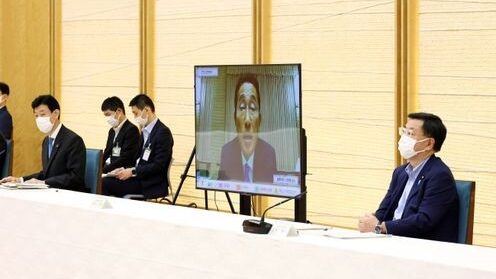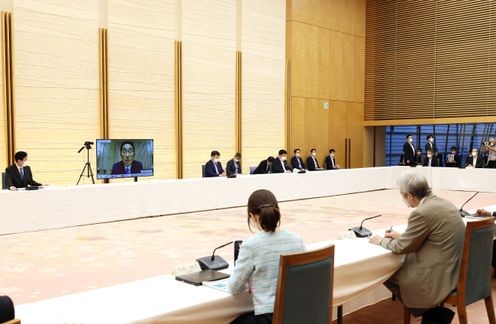Critical Reasons for the Building of New Nuclear Reactors: Why did Japan Decide to Change Her Policy ?

(Source: Prime Minister of Japan and his Cabinet)
In August, Japanese Prime Minister Fumio Kishida announced a new political approach. He showed the idea that accepted the constructing new nuclear plants. This essay will analyze the reasons why the Japanese government changed its policy.
(Figure: The Fukushima Daiichi Nuclear Power Plant)

(Source: Wikipedia)
The Fukushima Daiichi Nuclear Power Plant accident on March 2011 sounded an alarm bell about safety of nuclear power internationally. A major earthquake-triggered accident that a 15-metre tsunami disabled the power supply and cooling of three Fukushima Daiichi reactors forced to begin a comprehensive review of national energy strategy. As a result, the accident that three cores largely melted in the first three days indicated the necessity of cautious use about nuclear power.
However, at the meeting of the GX (Green Transformation) Implementation Council in August 2022, Japanese Prime Minister Kishida expressed his intention to construct next-generation nuclear plants in the future despite the massive gap in his previous commitment that placed emphasis on recycle power. The review was the first since the Fukushima Daiichi Nuclear Power Plant accident occurred while successive regimes strived to decrease the dependence on nuclear energy. Therefore, constructing new reactors caused a great deal of controversy (*1).
One of the reasons is considered to meet the energy requirements. “Ukraine war” provided us an energy crisis. Therefore, the government aims at meeting more of the nation’s energy needs. Nowadays providing a stable supply of electricity is one of the major challenges in many countries.
(Figure: GX (Green Transformation) Implementation Council)

(Source: Prime Minister of Japan and his Cabinet)
However, it can be seen that there is some real reasons behind the official announcement and plutonium management is viewed as a key to consider the problem. It is said that the Japanese stockpile of plutonium is 46.1 metric tons in 2020 and Japan’s large plutonium stockpile has been concerned by international community due to pluthermal energy generation plans dead-end because it can be converted into nuclear weapons. While plutonium is mixed with uranium to produce mixed oxide (MOX) fuel for use at nuclear power plants, Japanese nuclear plants cannot consume MOX fuel sufficiently. It is reported that the Igata Nuclear Power Plant in Ehime used only 0.3 metric tons plutonium in 2020 (*2).
It is unofficially considered that UK functions as the hub of the international plutonium management networks and UK have a strong desire to become one of the leading countries in SMR(Small Modular Reactor)development. Therefore, Japan seems to be exposed to the strong influence of UK about its nuclear power policy. It is said that SMRs has the greater advantage of safety because it can be operated for extended periods without refueling. Also, reactor cores for the light water SMRs can be designed to burn plutonium as MOX fuel. While minimizing the wastes requiring disposal, SMRs could be more effective at decreasing plutonium (*3).
(Figure: NuScale Power Reactor Building)

(Source: U.S. Department of Energy)
In conclusion, it can be seen that the Japanese nuclear power policy is in the face of foreign influence. As we know from history, it is largely recognized that the nuclear power plant construction had some political ties in Japan because it was exploited for one’s own interests occasionally. Therefore, it seems that you also have to focus on external power about the nuclear power policy in Japan.
Masatsugu KURAMOCHI
Analyst, Global Intelligence Group (GIG)
(reference)
(*1) https://mainichi.jp/english/articles/20220824/p2g/00m/0na/016000c
(*2) https://mainichi.jp/english/articles/20210710/p2a/00m/0na/018000c
(*3) https://www.energy.gov/ne/benefits-small-modular-reactors-smrs
https://www-pub.iaea.org/mtcd/publications/pdf/te_1450_web.pdf
https://www.meti.go.jp/shingikai/enecho/denryoku_gas/genshiryoku/pdf/025_04_00.pdf
https://www.fepc.or.jp/library/kaigai/kaigai_topics/1254052_4115.html



